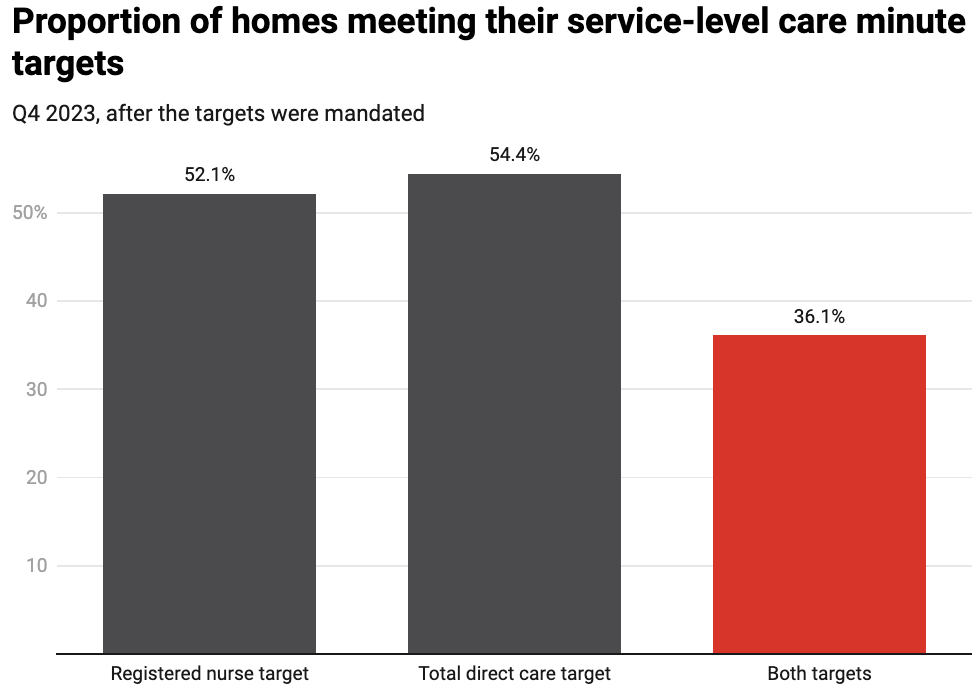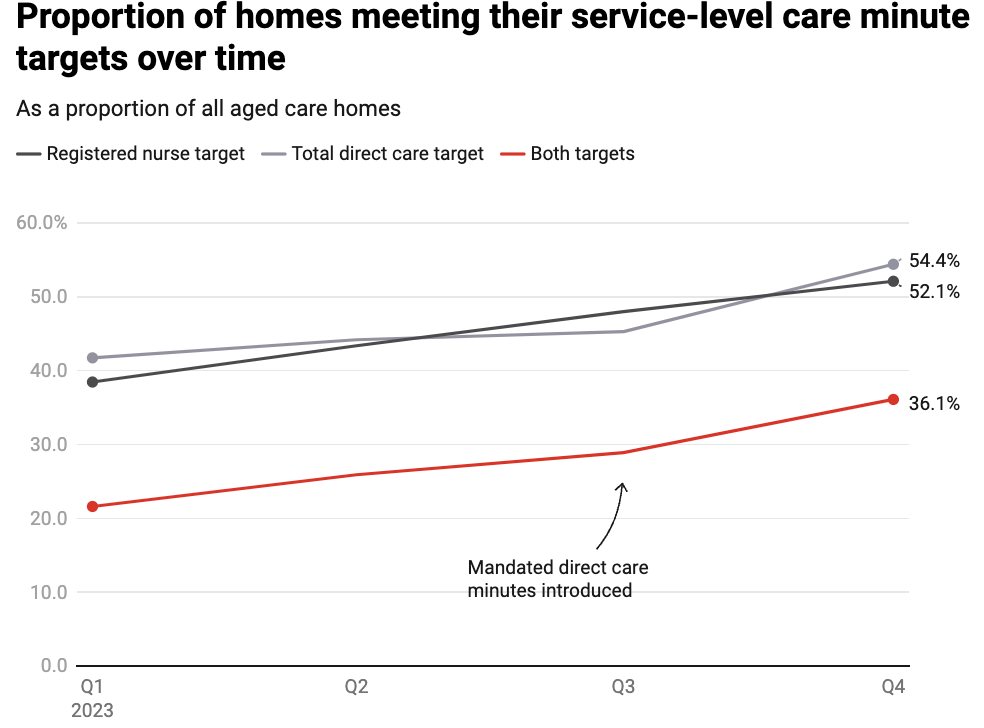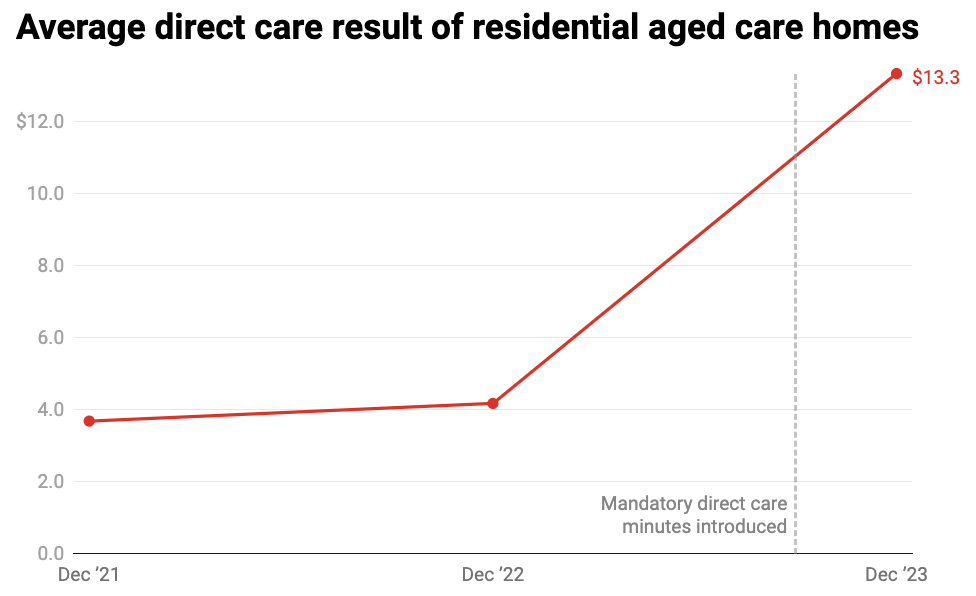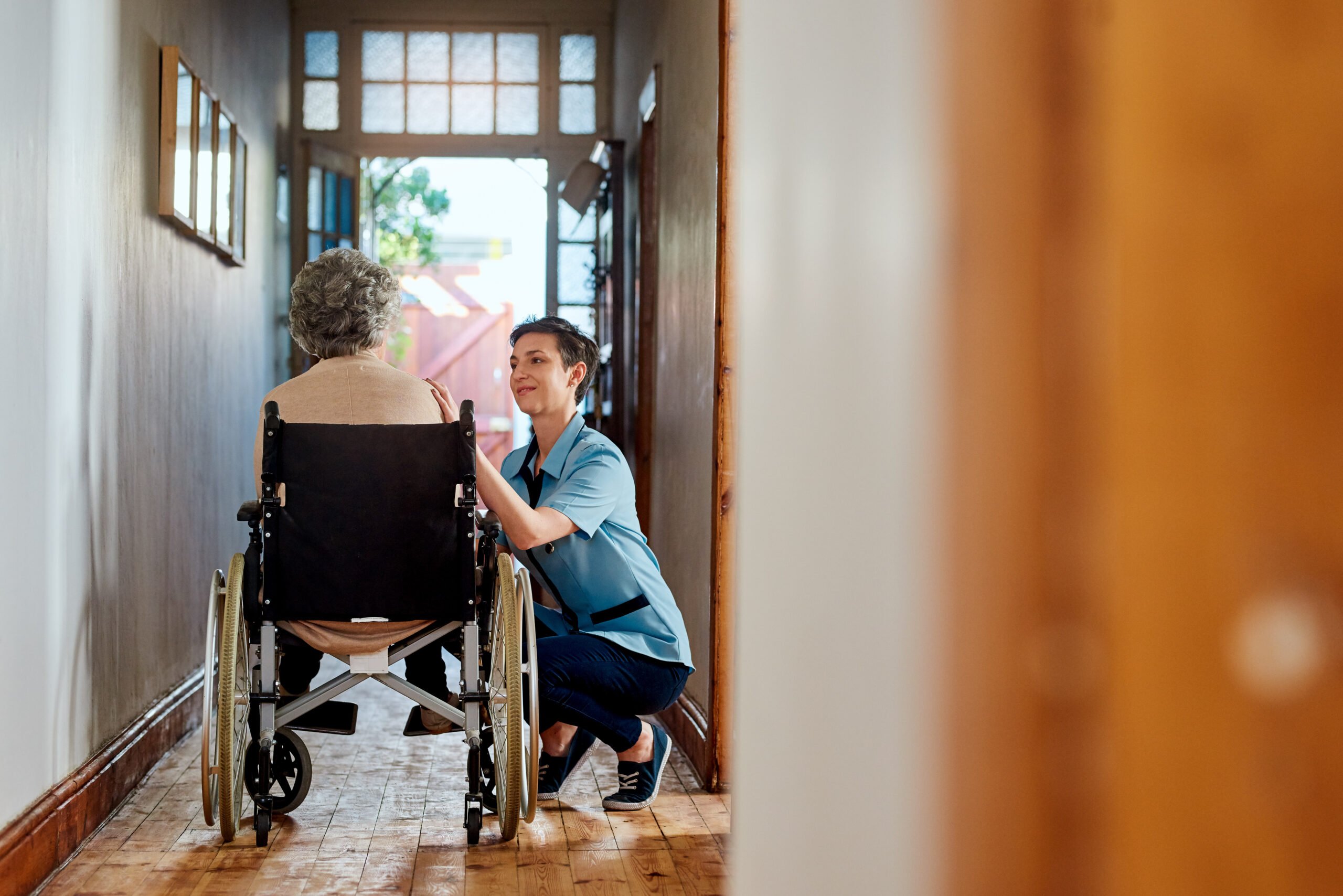Recent analysis has revealed a troubling trend in Australia’s aged care sector: many aged care homes are falling short of the minimum care standards that residents need and deserve. The 2023–24 mid-year report from the UTS Ageing Research Collaborative highlights significant issues in the level of direct care provided, sparking urgent conversations about the future of aged care in Australia. HCPA offers in-depth guidance on regulatory compliance, helping providers understand and adhere to the complex regulatory landscape to ensure high-quality care and compliance with industry standards.
The Current State of Aged Care
The UTS Ageing Research Collaborative’s latest report sheds light on the critical shortage of direct care being delivered in many aged care homes. Despite a high level of effort from some providers, nearly two-thirds of aged care facilities are failing to meet the mandated levels of direct care. This shortfall is concerning, especially given the substantial taxpayer funding allocated for this purpose. Some providers have even generated significant surpluses, raising questions about the effective use of these funds. HCPA assists in developing and implementing policies and procedures tailored to providers, ensuring that you meet the required standards and provide optimal care.
New Standards for Direct Care
In response to findings from the Royal Commission into Aged Care Quality and Safety, the federal government introduced new minimum standards for direct care in 2022. These standards require:
- 200 Minutes of Direct Care per Person per Day: This includes care provided by registered and enrolled nurses, as well as personal care workers. Of these 200 minutes, 40 must be delivered by a registered nurse.
- Adjusted Care Levels: The minimum care level varies depending on individual assessed needs.
These standards became mandatory on October 1, 2023. For the first three months after the targets were mandated, only half of all providers met or exceeded either of their care targets (the total direct care minutes or the registered nurse target). Only 36% met both.

Chart: The ConversationSource: UTS Ageing Research Collaborative (UARC)Get the dataEmbed Download image created with Datawrapper
This was a small increase from the previous quarter, but some providers still fell well short.

Chart: The ConversationSource: UTS Ageing Research Collaborative (UARC)Embed Download image Created with Datawrapper
Funding and Financial Impact
The funding for aged care homes is divided into three main categories:
- Direct Care: Primarily funded by taxpayers, covering nursing and personal care.
- Everyday Living Services: Includes food, laundry, and cleaning, funded by residents and capped at 85% of the single-age pension.
- Accommodation: Government-funded for those of limited means, self-funded by those with higher incomes.
On the advice of the Independent Health and Aged Care Pricing Authority, the government has increased the direct care funding for each resident living in an aged care home. The assumption is the home will spend that money to employ enough staff to meet its care level targets.
The report shows the difference between each aged care home’s average funding for direct care and its expenditure on that activity. Comparing the mid-year results for the past three years, in 2021 and 2022, homes produced, on average, a small surplus where revenue was slightly greater than wages and other expenses. This situation, where funding is just above costs, is the intended result of the new pricing reforms.

Chart: The ConversationSource: UTS Ageing Research Collaborative (UARC)Get the dataEmbed Download image Created with Datawrapper
But things have changed for the most recent period. The government has significantly increased funding to meet staffing costs to achieve the mandatory care levels. It has also increased funding in light of the pay rises to direct care staff, primarily nurses and personal care workers, which was decided by the Fair Work Commission.
This taxpayer funding has been provided to each home regardless of whether they are employing the required number of staff. Because of the failure of some providers to meet their mandated targets by December 2023, the sector, on average, generated a significant direct care surplus of more than A$13 per resident per day. Some providers have been using the money to cross-subsidise losses they incur for their everyday living services and accommodation.
Identifying the Gaps
The report highlights that homes failing to meet their care targets are often in metropolitan and larger regional centres and are more likely to be operated by for-profit providers. These homes are achieving significant financial benefits from direct care funding, despite not meeting the mandated care levels.
Preparing for Upcoming Changes
The sector faces further challenges as the minimum sector average for direct care is set to increase to 215 minutes per resident per day on October 1, with registered nurse care rising to 44 minutes. Providers will need to address these challenges to ensure compliance with the new standards and continue to deliver the quality care that residents deserve.
Ensuring Compliance
To align with the new quality standards, aged care providers should:
- Assess Staffing Levels: Regularly review and adjust staffing to meet the required care minutes, ensuring adequate coverage by registered nurses.
- Optimise Resource Allocation: Utilize funding effectively to cover staffing costs and improve care quality without generating unnecessary surpluses.
- Implement Continuous Improvement: Engage in ongoing training and process improvements to enhance care delivery and maintain compliance with evolving standards.
For more details on the new quality standards and how to ensure compliance, visit the Aged Care Quality Standards webpage and stay updated with sector-specific guidelines and resources.
By addressing these issues and preparing for upcoming changes, aged care providers can improve care outcomes and meet the needs of Australia’s aging population more effectively.
HCPA is an all-in-one solution for Aged Care providers, supporting them with registration, growth and consulting. Contact us here or call 03 9084 7472 to learn how we can help you succeed.
SOURCES | The Conversation ‘Most aged care homes are falling short of minimum care standards – new report |





